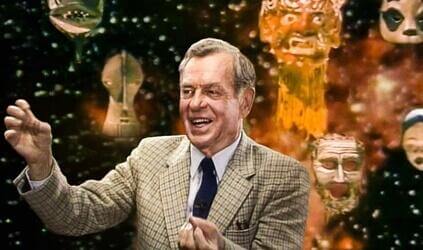Joseph Campbell was undoubtedly one of the most important mythologists of all time, his life changed when, as a child, his father took him to the American Museum of Natural History, it was there that he discovered Native American cultures that aroused a curiosity that accompanied him. him to death.
He studied mathematics and biology, but his main interest was culture and the human spirit, so he graduated in English and medieval literature, areas that approached what was his true passion: myths.
- Joseph Campbell traveled to Europe to study languages and.
- During his visit to the Old Continent.
- Met the work of Sigmund Freud and Carl Gustav Jung.
- Having been particularly fascinated by the latter.
He then returned to the United States and spent five years reading, and that’s how he began to look at the idea that all myths, at one point, had a similar structure, was the seed that gave rise to a great work.
“With the rejection of the suitors, with the crossing of a barrier, the adventure begins. You’re entering new uncharted territory. There can only be creativity if you leave the border, fix it, all the rules. -Joseph Campbell-
Joseph Campbell made long trips, including the one he made in India and the other in Japan, after this last trip, concluded that American culture was very ignorant of different cultures and myths, so he began advertising work. he developed until the end of his days.
In 1988 he began recording Joseph Campbell’s special and the Power of Myth. Originally, it began as a documentary in which each episode featured a conversation between Joseph Campbell and journalist Bill Moyers about myths.
The entire series was not broadcast on television until a year after Campbell’s death, it is from these interviews that the book O Poder do Mito was published.
Campbell has managed to revive mythology. Contrary to what many thought, myths were not only funny stories to tell around a campfire, but powerful stories destined to guide the human mind.
Joseph Campbell was able to demonstrate that the essence of all human myths is similar, and called this model a “monomito” or “hero’s journey. “
The journey of the hero or the monomete defines the basic model that follow the main myths and / or epic stories of all eras and the world, this structure consists of 17 steps, which are part of three basic stages: exit, initiation and return.
All of this is structured as follows
In short, Joseph Campbell states that all myths have a similar basic plot, this corresponds to a hero who accepts the call to enter an unknown world.
In this world you have to deal with different tests and tasks, for which you sometimes receive supernatural help, if you pass the test you will receive an extraordinary gift or blessing and soon face the dilemma of returning or not to the world. common world, if he returns he will have to face new trials and, when he overcomes them, he will take his gift to improve that common world.
Joseph Campbell’s work has had a particular impact on the world of literature and film: books such as Lord of the Rings or films such as Star Wars follow step by step the structure of the hero’s journey, that is, the monkey.
However, the contribution of Campbell’s work goes much further. He saw myths as an “experience of meaning”, that is, an approximation to stories that gave wisdom and meaning to human life.
They are stories that allow us to look inside ourselves and receive a deep message that is encrypted in symbols, but that also fulfills its task of raising awareness.
From his studies, Campbell proposed a philosophy of life that many summarized in one of his famous phrases: “Continue your happiness”. It is a mantra, a synthesis and also a goal: to become that hero who goes in search of the gift. that will allow you, in the long term, to improve the world in which you live.

